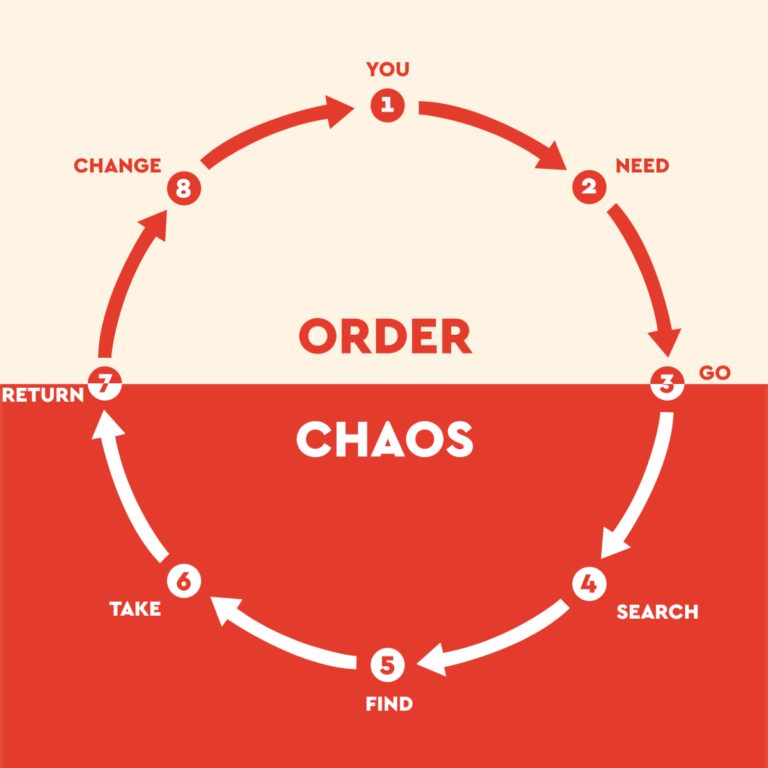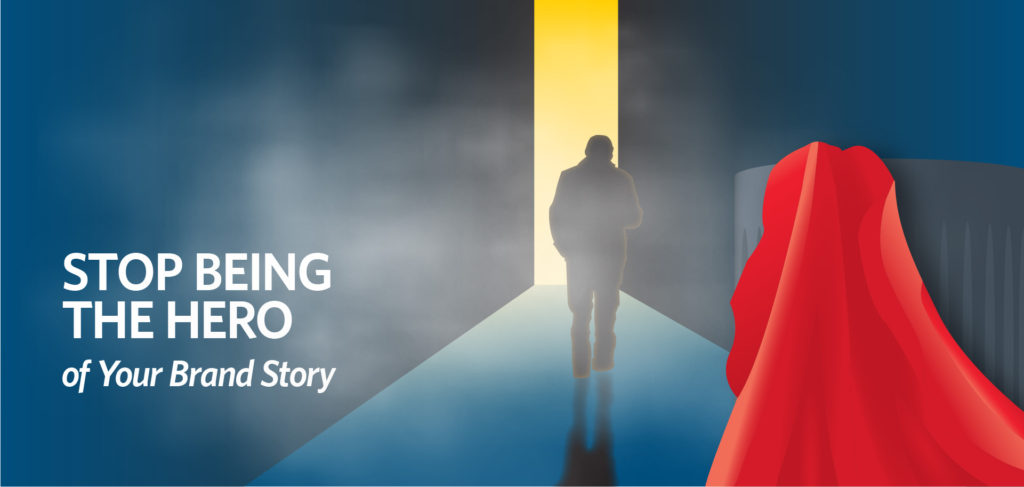

Storytelling is powerful. There is no disputing that. It is hard to argue with a mode of sharing and spreading ideas that date back to cavemen (and women) sitting around their newly discovered campfires, grunting and gesturing their stories of the hunt that was and the dangers that may lie ahead. And here we are, still sharing stories around campfires, but also sharing them with incredible ease and unimaginable reach.
Thanks to technology, while the elements of good storytelling remain largely the same, the ability to share our stories has expanded to be nearly unlimited. From the limited reach of sharing by the spoken tale, to the permanence of passing along handwritten scrolls and parchments, to the efficiency and much wider reach of the printed page (thanks, Gutenberg!), we passed our stories far and wide. They went even broader with the advent of the aptly named “broadcasting.” Radio gave us the ability to add sounds, music, and voice to our stories, and share them wirelessly and widely. Television took the reach further and added visual images to our stories and gave us the ability to record and share actual events as part of our storytelling. Then the ultimate disruptor and distributor, the internet, arrived and gave every one of us the potential to share our stories on a truly global basis.
As most seasoned marketers know from experience, all good marketing is driven by good storytelling. The ultimate goal of marketing is to change people’s behavior, usually to influence them to be interested in, or ideally purchase, a product or service. That is why storytelling is so important to marketers. A story has power. A story can impact the way we feel and connect with us on an emotional level. A story can pique and hold our interest and impact the way we think. A story has the energy to influence the way we act. The most important thing for the marketer/storyteller is that a story has the power to change someone’s behavior and compel them to take action.
For all the reasons above, we hear many use the expression “no story, no sale.” It’s a valid maxim. Too many sales pitches focus solely on the features a product has – the bits and bytes of the computer or tablet, the horsepower of the engine, the thread count of the sheets, etc. When you do this, you are commoditizing your product and leaving it open for unemotional side by side comparison. Your product suddenly falls into a category with everyone else’s similar product. It becomes a line item on a chart comparing bits and bytes, horsepower, thread count. Now the only unique thing about your product is where it sits on that comparison chart – low, medium, or high. There is nothing unique or special about it. There is nothing to make it stand out. There is no story behind it.
Great salespeople know that you are never selling a product or a service. You are always selling the outcome – how will your customer’s life change because of your product or service? How will they feel because of your product or service? How will they or their business improve because of your product or service? The product itself is not what your customer wants or needs. What they truly want, or need is the outcome. The change. What your product will do for them. And to make your potential customer see that outcome, see that potential, see, and feel that result, you need to paint a picture of it for them. You need to tell a story.
This is why testimonials are so important and powerful for selling, especially for e-commerce. What is a testimonial but a story – a story that rings particularly true because it is told by someone who has already experienced the outcome of having bought, used, and enjoyed your product or service. Their story is real and impactful. It is trusted because it is told by a peer – a customer, not a seller.

What makes a great story? That has not changed much over the centuries, either. A good story has a protagonist who has a problem or faces a challenge or obstacle. The good story follows that protagonist as she or he rises up to face that challenge, gets help along the way, and ultimately prevails as a hero. This fundamental, quite common, and very effective story structure was popularized by Literature Professor Joseph Campbell, who identified it as the “Hero’s Journey.” You can spot the Hero’s Journey structure in almost every great novel or film, from The Wizard of Oz to Star Wars (a few of my favorite stories) to countless other tales throughout history. It is a tried and true structure that is proven to connect and resonate with just about any audience.
This compelling story structure can also be used for your story and the story of your Brand.
The excellent writer Donald Miller has taken the classic Hero’s Journey and broken it down into a template of steps in his book Building a Story Brand. Inspired by Miller’s book, I have been working with several companies lately to develop their Internal Brand Story. As the “internal” Brand Story, it is not intended to be marketing collateral or a story you would share on your website or tell others. Instead, the Brand Story I have been helping create is an internal story to share with every member of your team. The Internal Brand Story is not the story you shout from the top of the mountain. Rather, the Internal Brand Story serves to align everyone on your team and inform the messaging and stories your brand shares with the world.
Before you can write your Internal Brand Story, you need to define and fully understand your Brand’s “North Star.” Just as the real North Star serves to help mariners navigate, your Brand’s north star is an ever-present guide to keep your brand image and message on course. A brand’s north star is a short, concise statement that is at the core of what your Brand stands for. With everything you do, every product you make, every marketing message you send, you should be able to look at your north star and say, “yep, it fits.” For example, suppose your Brand is a toy manufacturer. Your north star might be, “Design, educational value, and quality I’d give to my own children.” Then you and everyone on your team can look at everything you do and ask yourself, “would I be happy giving this toy to my kid?” If the answer is anything but “hell, yeah!” you are probably off course and should re-think it. Having a clear and concise North Star is a powerful tool to keep everyone focused on the things that really matter.
Once you have your North Star, you can begin working on your Internal Brand Story. It should be based on the Hero’s Journey, where the hero faces a villain, gets help, and learns new skills, defeats the villain, saves the day, and returns changed for the better. Miller’s book has a simple template you can follow for this, and I use a version of it for a fun and effective story-building exercise I conduct with brands I work with. But here is the twist: your Brand is NOT the hero.

Face it; we like to talk about ourselves (some of us more than others.) Despite the urge to make it so, your Brand is not the hero of your internal brand story. The story you want to create is not about you. It is about your customer. Your customer is the hero of your story. The villain of the story is the embodiment of problems and challenges your customer faces. Your Brand is the helper, the guide, the person our hero encounters along the way who helps them solve their problem and gives them the skills and power to defeat their villain. Remember, it is the outcome that matters to your customer. In your Internal Brand Story, you want to reinforce how using your product or service will deliver that outcome and make your customer the victorious hero and change them for the better.
I usually conduct the exercise to create the Internal Brand Story with senior executives and marketing team members, so they all have input and buy-in, and have the valuable opportunity to think and brainstorm from the perspective of their customer. From the exercise notes, we literally write a three to four-page short story following the customer/hero’s adventures and their positive experience with your product or service, always keeping the North Star in mind.
When the story is done, it is shared with everyone in the company. Everyone. It is shared with the proviso that this story is for them and not to share. It informs the Brand’s content and messaging, but it is not the Brand’s literal messaging. It is a guide and reminder of the mission and purpose of the Brand, and the impact your products and services have on the customers you serve. Everyone in the company should be able to read the story and see the role they play in contributing toward making your customer a hero.
What’s your story?

Jeff Sass is CMO of .CLUB Domains and Paw.com and a marketing advisor to several other companies and brands. His book, Everything I Know about Business and Marketing, I Learned from THE TOXIC AVENGER, presents practical business and marketing lessons learned while making cult-classic low-budget films. For more about Jeff visit www.Sass.Marketing.
No other blog articles.
No resources.
Jeff Sass is CMO of .CLUB Domains and Paw.com and a marketing advisor to several other companies and brands. His book, Everything I Know about Business and Marketing, I Learned from THE TOXIC AVENGER, presents practical business and marketing lessons learned while making cult-classic low-budget films. For more about Jeff visit www.Sass.Marketing.
Get notified with new podcast episodes every week! Plus, actionable and practical eCommerce tips straight to your inbox.
No spam. Unsubscribe anytime.